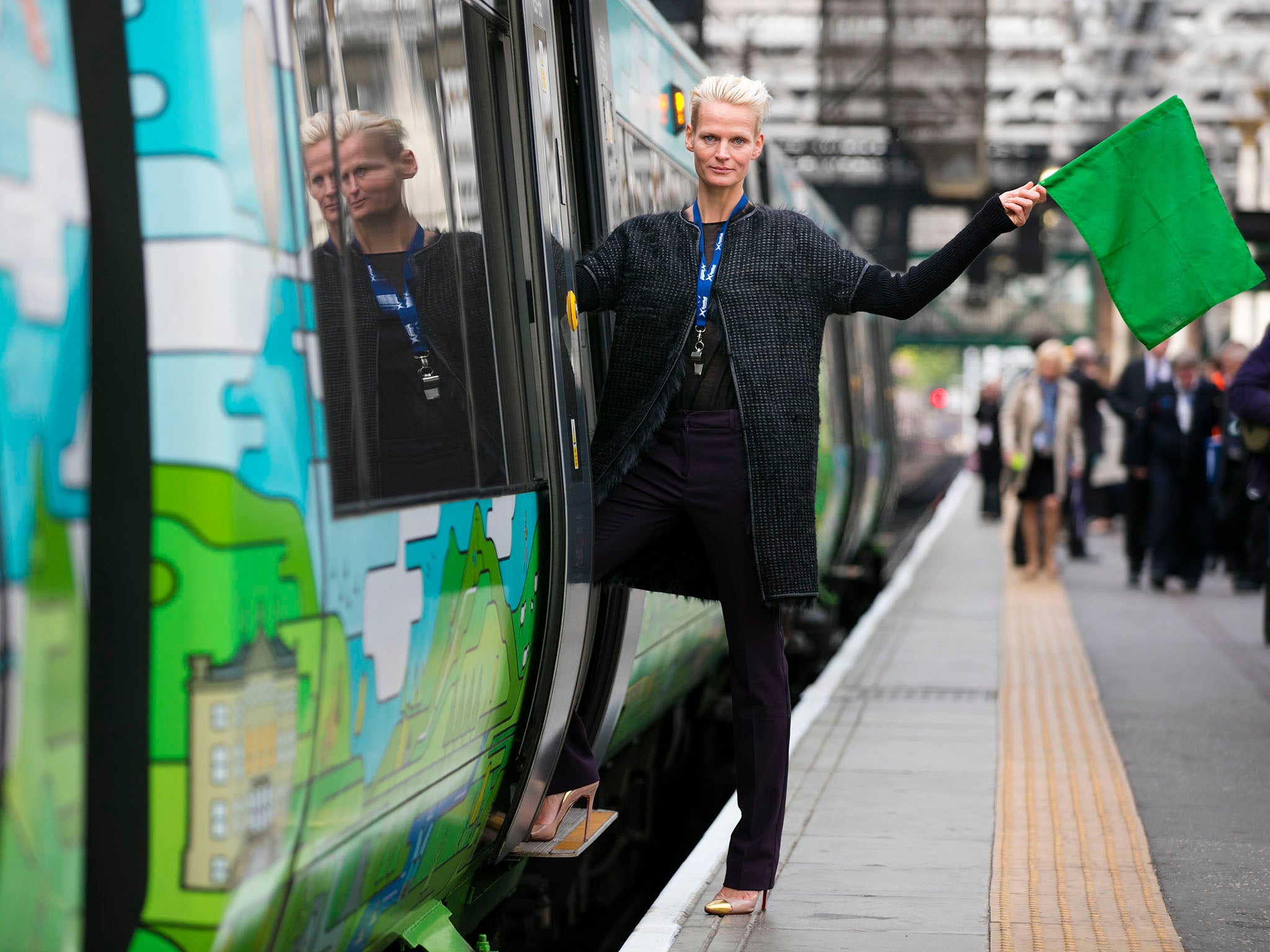£300m railway line re-opens in Scotland - but is it a railroad to nowhere?
The £300m project is the longest new domestic railway to be constructed in Britain for over a century

Twenty-five miles south of Edinburgh, in a narrow corridor shared by road and rail, the natural transportational order was restored at 11am on Friday morning. A ScotRail train driven at 85mph by Yvonne Reid overtook a National Express bus heading south on the A7 - the road that parallels Scotland’s newly revived rail line - on the Borders Railway.
The Edinburgh-Carlisle line was completed in 1862, but in 1969 it became one of many casualties of the 1963 report The Reshaping of British Railways, more commonly known as the Beeching Report. It recommended a cull of more than half of the nation’s 4,000 stations, along with 6,000 miles of railway line.
Following years of local campaigning, Transport Scotland and Network Rail have finally restored passenger services to the northern portion of the Borders Railway. It re-opens to the public this weekend, almost half a century after the line from the Scottish capital to Carlisle closed.
“This isn’t a politicians’ railway - it’s a people’s railway,” said David Parker, Leader of the Borders Council, after a special train carried dignitaries and journalists on the first southbound run.
The £300m project is the longest new domestic railway to be constructed in Britain for over a century. Passengers will pay £10 (or £11.20 for an off-peak return) for the full 30-mile journey, which takes just under an hour.
The line is mostly single-track with three “dynamic passing loops”. It serves relatively small communities, and stops well short of the English border, where it would connect with other trains and offer the most direct route between Edinburgh and London.
Critics have suggested that the money would have produced better returns on other transport infrastructure, for example on rail links connecting Glasgow, Aberdeen and Inverness airports to their respective cities. But Keith Brown, the Cabinet Secretary for Infrastructure, Investment and Cities, told The Independent: “We have to take a broad view of this, as indeed the Victorians did. They invested and had returns for decades afterwards, and I think there will be decades of return - both monetary and also in terms of social and economic benefits for the individuals who are served by this line - for many years to come.”
The Victorian engineers carved a beautiful route through hills patched with woodland and heather, and punctuated by the occasional wind turbine. Once clear of the environs of Edinburgh, human settlements are few, with tall and stately Borthwick Castle enlivening the view to the west.
During the main part of the journey, the only spectators to watch the train go by were a few dozen sheep and a solitary heron.
A CarpetRight warehouse signalled the arrival in Galashiels. The original station was demolished after the line closed, and an Asda supermarket now stands in its place, leaving only a narrow space for a single platform.
The southern terminus of the line is not a town, but a car park on the outskirts of the village of Tweedbank. It is close to Abbotsford, the former home of Sir Walter Scott - author of the Waverley novels, for which Edinburgh’s main station is named.
The market town of Melrose, only two miles further on, was on the original line to Carlisle. It has a fine Victorian railway station, currently the Monte Cassino pizzeria, and a Station Hotel, but the railway trackbed has been taken over by the Melrose bypass.
“It would definitely benefit the town,” said Steven Gray, barman at the Station Hotel, “but I can’t see it happening.”
Mike Cantley, Chair of Visit Scotland, said: “We’d love it to go all the way to Carlisle, but first steps first. It’s going to be very big for us as a new attraction, especially in attracting back the millions of people who have visited Scotland previously.”
The last major transport investment involving the Scottish capital was Edinburgh’s tram system - a financial and logistical catastrophe that opened years late and cost the country hundreds of millions of pounds more than anticipated.
In contrast, the Borders Railway has been delivered more or less on time and on budget (subject to the fee of the supermodel Anna Freemantle, who was engaged to dispatch the media preview train from Edinburgh Waverley).
The refrain from the railway’s protagonists is “Viable, not nostalgic”. The experience of restored rail services in England recently is auspicious, with re-opened stations at Chandler’s Ford in Hampshire and Outwood in West Yorkshire proving more popular than was predicted.
Stephen Joseph, chief executive of the Campaign for Better Transport, said: “You only have to look at the number of passengers using the new stations and lines to see how viable and popular they are. I am sure that the Borders Railway will be no different.”
The Queen will officially open the line on 9 September, the day she becomes Britain’s longest-serving monarch.
Subscribe to Independent Premium to bookmark this article
Want to bookmark your favourite articles and stories to read or reference later? Start your Independent Premium subscription today.

Join our commenting forum
Join thought-provoking conversations, follow other Independent readers and see their replies